How Anyone Can Design Labels for Drinks
Published April 12, 2021 on WineEnthusiast.com
To paraphrase first-century Roman gourmet Apicius, we drink with our eyes first. Many of us have ordered a wine or selected a bottle in a store because of its packaging or something about its label. It could be Hendrick’s apothecary-inspired gin design, the pop art that’s adorned Absolut offerings or 19 Crimes’ labels that spring to life with our smartphones.
A 2016 study by wine.net said that of 2,000 wine drinkers surveyed, 82% made their selections based on the label. Great packaging melds style and substance, and behind each is a graphic artist or team tasked to create eye-catching designs that encapsulate the spirit and philosophy of the brand. Here’s how to become one of them.
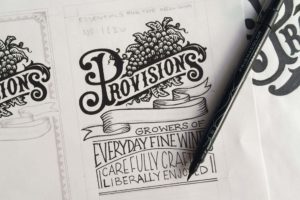
Pursue formal education or self-directed study
Armed with a Bachelor of Fine Arts degree from Notre Dame, with a focus in graphic design, Amanda Rockwell started her career as the sole designer at Seattle-based Precept Wine. Nine years later, as the company’s creative director, she heads up a full-service, four-person team.
“If you’re passionate about making this your career, learn as much as you can and hone your craft,” she says. Rockwell advises those interested to seek online courses on the fundamentals—tools, processes and strategies—and create practice projects to build a portfolio.
Paula Schultz picked up artist gigs in high school and before going on to obtain a bachelors in interdisciplinary art and technology from the University of Wisconsin-Milwaukee. She interned with Milwaukee Urban Gardens and Do414, and worked on campus as a designer for school restaurants operations. Now, she serves as senior designer for Bently Heritage Estate Distillery in Minden, Nevada, and is also a freelance illustrator for The Washington Post and Los Angeles Times.
Schultz advises students to “look at other creators you admire and your own passions for inspiration.” Invent a mock brand for your portfolio or provide pro bono work for a friend’s startup.

Draw on previous creative experiences
As she creates label artwork for Melvin Brewing in Alpine, Wyoming, Kelly Halpin calls upon her photography background. Raised in a family of artists who encouraged creativity, Halpin earned a degree in filmmaking. She realized that she preferred to tell stories in other ways and became a full-time freelance illustrator, a skill she brought to the beer industry.
Halpin began to collaborate with Melvin in 2010. She creates characters for packaging that embody the brewery’s message of “fun and mayhem.” She’s excited to draft strong female characters like the mad scientist on the new Juice Theorem IPA.
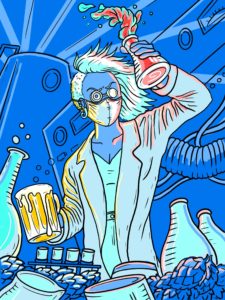
“I try to come up with a character that encompasses a new concept and add a bit of quirkiness and flair,” says Halpin. “Having a creative side is key, although I don’t believe you have to be a ‘professional’ to come up with unique artwork.”
Lauralee Végvári grew up in California wine country, where events like weddings, proms and graduations at wineries are common. She channeled her obsession with paper, fonts, graphics and style to create invitations.
A decade later, Végvári took a marketing position at Black Button Distilling in Rochester, New York. There, she found that her earlier experience translated well to her current role as brand designer.
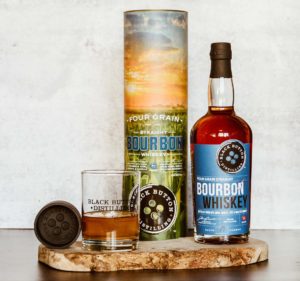
Now she creates everything from labels to posters and custom shelving units in liquor stores. Végvári finds seeing her visions come to life to be immensely satisfying and validating.
“Clearly, design is aesthetic, but if you can, convey your character that speaks to people,” she says. “The most successful [ones] form a connection with the consumer.”
Understand that it’s more than just creating a pretty package
“The designers I admire most are able to deeply understand the core essence of a brand and where it comes from, and can then conjure that into beautiful and effective packaging,” says Luke McKinley, marketing director for Novo Fogo Cachaça.
McKinley earned a degree in international studies and a focus on ethnography. He gained experience by creating video and photo content and managing digital marketing. He works with Novo Fogo’s CEO and graphic artists to oversee the company’s packaging.
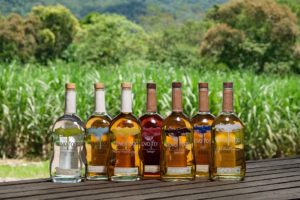
McKinley aims to balance consumer education about a less-familiar spirits category and the company’s sustainability efforts with clear, concise information. Design chops are important, but so is the ability to convey unique attributes and sense of place.
Make art part of every day
“Graduating from an art school is not mandatory, but having art and culture every day is,” says Julien Fort, co-owner and creative director of The Rooster Factory. The agency, based in Pasadena, California, specializes in the drinks industry.
He encourages would-be package artists to venture out to galleries, museums and bookstores, peruse street art and murals, and express their creativity. “Art is the spark and the source of everything,” he says. “It’s the engine, the fuel, the excitement, the joy.”
Fort’s first project was to illustrate a series of pinups engraved on alembic stills at a distillery in Cognac, France, inspired by World War II nose art painted on planes’ fuselages. Today, he’s the company’s leading designer and illustrator.
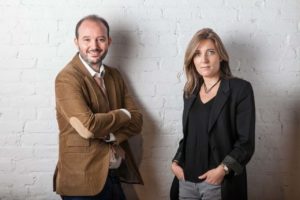
Credit Andrew Kist
Along with partner and co-owner Audrey Fort, they handle projects from inception to delivery, which includes brand identity, illustrations, packaging and visual communication. A few of their newest designs include packaging for Old Duff Genever, Insolito by Matusalem Rum and Ólafsson Gin.
Have an innovative, forward thinking and eco-conscious skillset
A major aspect of wine, spirits and beer packaging in recent years has been to reduce its environmental impact through lighter packaging made from recycled materials. Those who can display career skills in sustainable design may gain a competitive advantage.
Such is the case for Kind of Wild, a new e-commerce brand of certified organic and eco-friendly wines.
“We have the chance to be better and be more responsible when it comes to sourcing, designing and developing a brand,” says Jordan Sager, who cofounded the company with brother Adam Sager. Todd Nelson acts as their chief marketing officer.
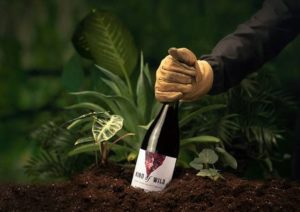
Initiatives include greener labeling and packaging, like the use of 100% recyclable linen and hemp labels printed from sugarcane, the elimination of unnecessary bottle tops and the adoption of lightweight bottles.
“A new brand design needs freshness that sets it aside from direct competition, but also tells a story in an attractive and meaningful way,” says Jordan.
Become as educated as possible about the beverage industry
The challenge is to juggle urgent production deadlines while maintaining a creative mindset. Every day is both a sprint and marathon, says Fort.
To reduce the learning curve, become familiar with drinks and the way they are consumed, industry trends and graphic codes behind categories. Spend time in bars and liquor stores and talk to bartenders and consumers about their likes and preferences.
“The designs that resonate most with consumers, generate interest and sales and stick on the long term are the ones that tell a real, authentic, aspirational story,” says Fort. “We’re just telling stories with design.”
